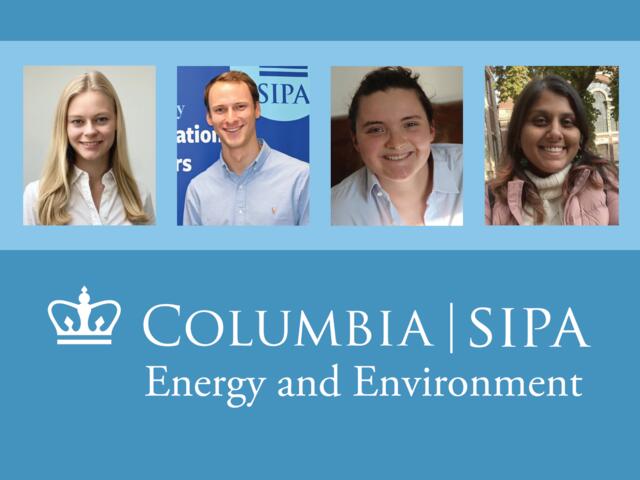

Energy and Environment Practicum
Curricular enhancement designed to empower students as they define their career trajectories
The EE Practicum, formally known as the Global Collaboratory, hosted by the Energy and Environment Concentration at SIPA, is a curricular enhancement designed to empower students as they define their career trajectories, expand their professional networks, and build their experience in the global energy and environment field. Student-led teams receive financial support and expert guidance while designing and implementing their projects.
EE Practicum fieldwork projects have the following key objectives:
- Build sector experience. Projects focus on current, cutting edge issues in the energy and environment sectors to help students gain hands-on experience working in the field.
- Expand professional networks. Working with sector leaders to implement projects builds relationships that can be used to define goals and create post-graduate employment opportunities.
- Train global leaders. Students are challenged to design a project, build partnerships, and deliver results for an energy and/or environment issue in a global context.
- Have an impact. Energy and environment are some of the defining issues of our times. This is an opportunity to engage with local communities and make a difference.
The next round of proposals will open September 2024.
The Energy and Environment Practicum is made possible by generous financial contributions from Columbia University's Center on Global Energy Policy.
Advancing the Circular Economy in the OECS

In collaboration with their local partner Unite Caribbean on Saint Lucia and their academic adviser Danielle Azoulay, the team developed strategies to further develop the Saint Lucian recycling system as a pilot for the OECS with a focus on plastic recycling. Through stakeholder engagement during their visit to Saint Lucia, the team conducted a macroeconomic analysis of the plastics market and suggested applicable best practices for monetization, standardization, and monitoring of the Saint Lucian circular economy system.
Team: Claire Hegemann, Jonas Piduhn, Olivia Staudenmeyer, and Shreya Tiwari
PlanBio: A Comparative Analysis and Benchmarking Report on the Bioeconomy of Pará, Brazil

The research investigates how different megadiverse countries address biodiversity conservation and how their conceptual approaches translate into policy strategies, with particular attention to the component of social inclusion. It examines current policies in Brazil, Costa Rica, and the United States to determine how policymakers have engaged in dialogue and ensured benefit-sharing with local communities, considering both multilateral goals and national commitments. A vital component of this research was developed in the State of Pará, Brazil, which is formulating the newest Bioeconomy Strategy in the Amazon Forest territory (PlanBio). In March 2023, the researchers conducted interviews with representatives who were consulted by the State during the development of PlanBio to assess their perception of the inclusion process.
Team: Leah Bronstein, Luma Teixeira Dias, and Maria Sabater Nunez
Powering Nusantara: Modeling the Electricity Future of Indonesia’s New Capital City
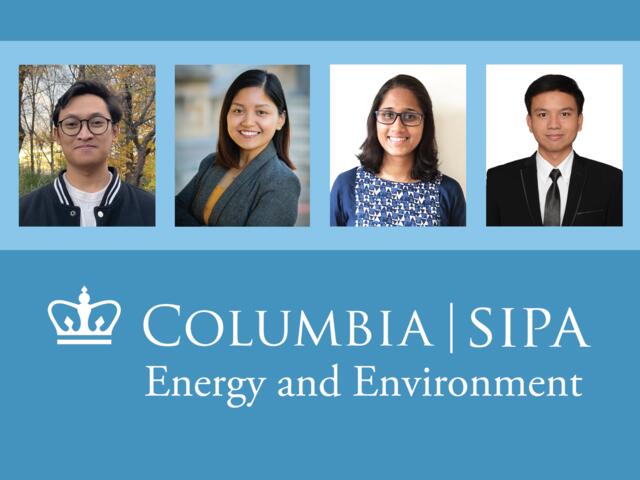
Due to rising sea levels, urban density, and aging infrastructure, the Government of Indonesia has mandated a capital city relocation from Jakarta to Nusantara beginning in August 2024. This decision is coupled with a law to achieve 100% renewable energy to power the new city by 2045. In collaboration with the appointed Capital City Authority (IKN) and under the guidance of Dr. James Glynn as advisor, our team projected the electricity future of Nusantara by developing various supply and demand scenarios and models. Our results showed that it is possible to reach the target, but with Indonesia's current landscape, policy recommendations were laid out to help facilitate this energy transition. Thank you to the Center on Global Energy Policy and the Climate School, our team presented the findings and report to IKN and other stakeholders in Jakarta in May 2023.
Team: Rio Kaswiyanto, Raihan Amir Rashidi, Akhila Suri, Ardhi Wardhana
Low-Carbon Hydrogen: Examining Decarbonization Potential and Commercialization Pathways Through 2035
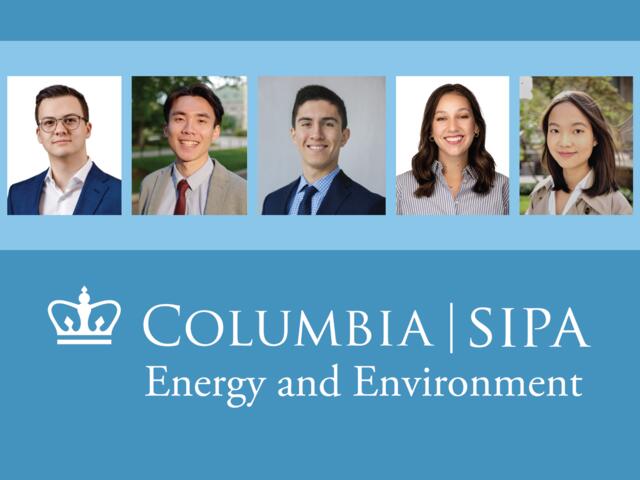
Hydrogen, an abundant and versatile element, has the potential to contribute to the energy transition through its application in a number of different economic sectors. Building on an original survey of hydrogen industry stakeholders, expert interviews, and a comprehensive secondary literature review, this project investigates the potential of low-carbon hydrogen in Europe and the United States through 2035. The report identifies similarities across factors such as cost competitiveness, policy inducements and penalties, and decarbonization potential among the economic sectors where low-carbon hydrogen presents a viable market opportunity. The report also identifies important differences in the decision sets that industries face with regards to divergent decarbonization pathways. At the conclusion of the project, we had the opportunity to share this report with the DOE’s "Pathways to Commercial Liftoff" team.
Team: Pieter Bosmans, Ray Cai, Jonathan Lesh, Sara Taffe, and Huiling Zhou
Fission for the Future: Ensuring American Primacy in New Nuclear for Geopolitical, Climate, and Economic Security
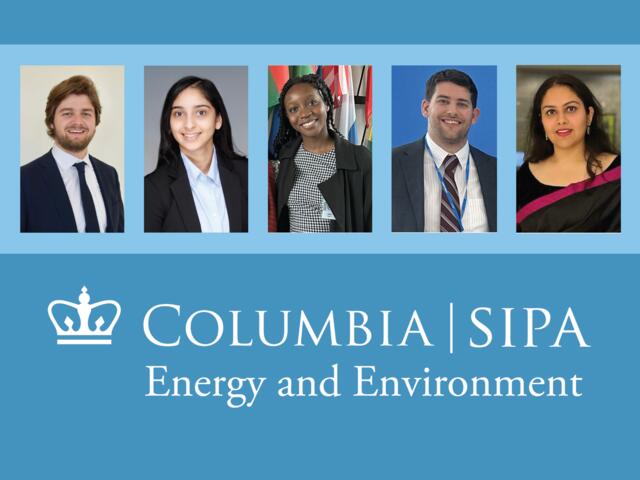
Our project's thesis is that geostrategic competition for dominance in the field of Small Modular Reactor technology is poised to transform the nuclear energy landscape, presenting benefits to the United States through maintaining nuclear leadership, countering Russia and China, creating domestic jobs, and reducing emissions. Based on unique, on-the-ground, in-person policy conversations with Senate and House staff on both sides of the aisle on Capitol Hill, U.S. federal departments, and the IAEA, we make the case that the United States has a clear interest in countering Russian and Chinese dominance in the field. To do so, we assess aspects of regulation, technology selection, project financing, geopolitical competition, and government policy to present a holistic picture. The report also includes a case study examining the Czech Republic, a country looking to import Small Modular Reactors and seeking a path forward as a NATO ally. Our report culminates with practical, politically actionable recommendations for U.S. and Czech policymakers.
Team: Andrew Evans, Hamna Khan, Kathryn Obisesan, Drew Tomashefsky, and Kanika Verma
ESG Solar
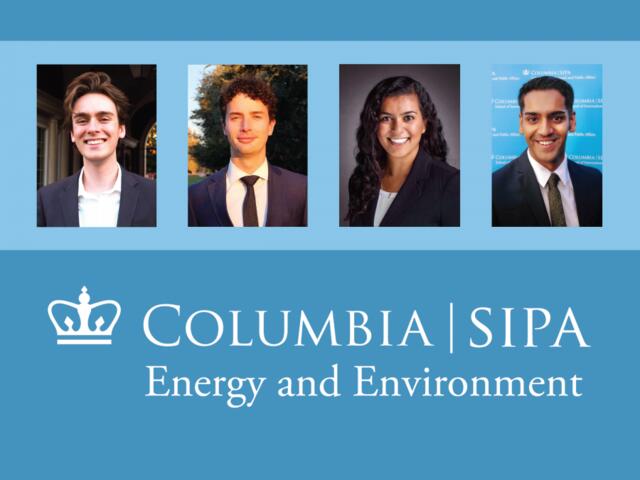
The solar photovoltaic (PV) industry has rapidly expanded in recent years, at the vanguard of the global transition to low-carbon energy. While solar is widely understood as a “green technology,” a thorough evaluation of the sustainability practices of firms operating within the solar PV supply chain is largely missing. To fill this knowledge gap, the ESG-Solar team investigates how environmental, social, and corporate governance (ESG) frameworks have been applied in the solar PV supply chain, whether unique private and public value is created by the adoption of ESG best practices in the solar PV supply chain, and finally, how that value can be expanded by businesses, investors, and policymakers. Overall, this report lays out the case for building a low-carbon, socially responsible solar PV supply chain with benefits extending to the firms leading this transformation, their investors, and the public.
Team: Alec Apostoaei, Thomas Boak, Bhavya Jha, Kabir Nadkarni, and Anonymous Contributor
Recharging the MTA
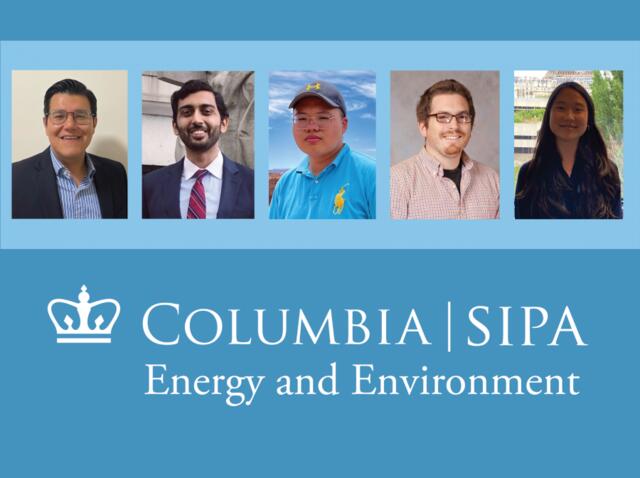
New York City's Metropolitan Transportation Authority (MTA) has committed to deploying a 100% zero- emission bus fleet by 2040. One of the technical challenges of achieving this goal is charging thousands of buses: Doing so will require finding new electric capacity, managing energy costs, and ensuring reliable bus service during grid outages. Recharging the MTA, a research project undertaken for the Spring 2022 Energy and Environment Practicum, explores the potential for energy storage to help address this challenge. Energy storage can shift or lower electricity demand peaks, provide resilience, and store electricity from renewable power sources. Recent years have also seen falling prices and rapid technological improvements. Yet energy storage's role in supporting transit operations is still relatively novel. This research project aims to provide the MTA with information it can use to tackle its energy challenges in order to accelerate the transition to clean and quiet electric buses for millions of New Yorkers.
Team: Fidel Gonzalez Parra, Shashank Jejurikar, Tianxiao Shen, Gideon Weissman, and Lilly Yejin Lee
Cartagena Hydrogen Project
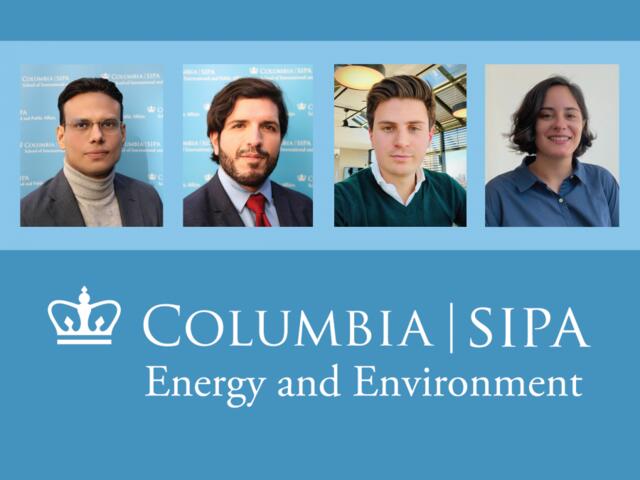
Low-carbon hydrogen and ammonia play a crucial role in the energy transition on a global scale. In 2021, the national government of Colombia published the Hydrogen Roadmap, which raises the opportunity of hydrogen as a development axis for the decarbonization and energy transition of the country. This project aims to analyze Cartagena's potential for developing a low-emission industrial center based on the application of blue and green hydrogen. The report identifies the region's opportunities in terms of supply and demand. We include the sources for producing blue and green hydrogen on the supply side, and its implications are identified. As for the demand side, we analyze potential hydrogen uses within the region in a series of stages of development in the short, medium, and long term, including the development of two pilot projects. We had the opportunity to present these results first national Hydrogen Congress in Colombia, where relevant stakeholders in the industry participated.
Team: Adalberto Castaneda, Diego Martin Castrillon, Juan Camilo Farfan, and Ana Sofia Guajardo
Chasing the Sun: Evaluating Trends and Innovations in the Japanese Solar Market
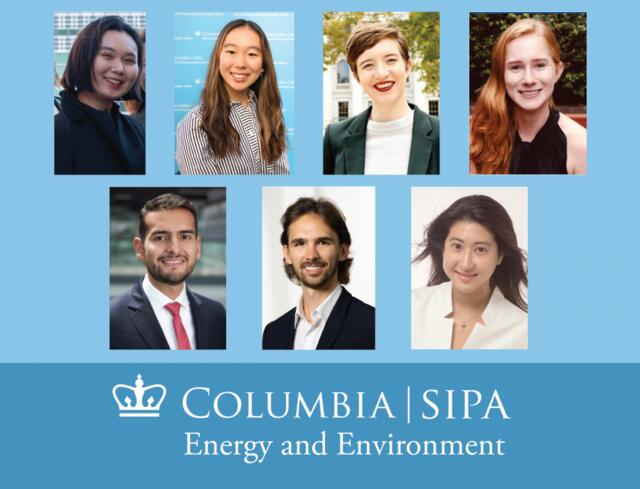
The project focused on identifying potential investment opportunities in Japan's solar market. Through interviews and desk research, the project aimed to understand the challenges and innovations in the market and regulatory framework to foster solar development in the country. The report evaluates Japanese companies' compatibility, urgency, preparedness, and willingness to engage in Power Purchase Agreement (PPA) procurement, and the related policy challenges they face. To gain a deeper understanding of the core barriers to expanding corporate PPAs in Japan, the team built a financial model for a 20 MW solar plant in Japan. The team also propose several innovations to drive future growth in Japan’s solar market and improve projects’ bankability and profitability. These include expanding access to and uptake of Virtual Power Purchase Agreements (V-PPAs) through joint procurement/aggregate V-PPAs and price hedging instruments.
Team: Riya Yingran Guo, Clara Li, Gillian McBride, Magda Miller, Sebastian Orozco, Ferdinand Pehamberger, and Koko Usami
Project Stonelore
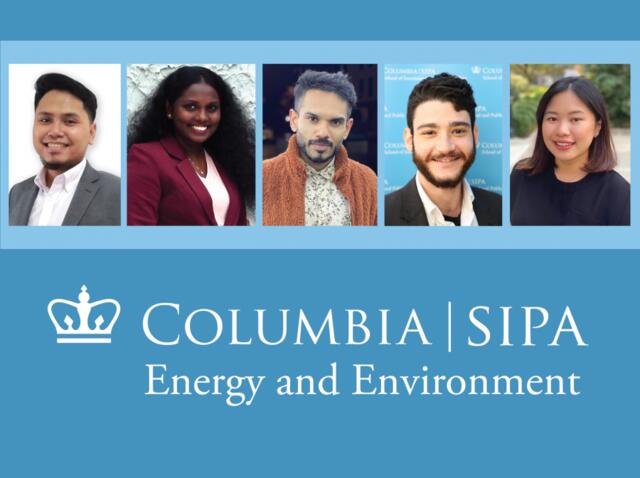
"Stonelore," a word coined by speculative fiction author N. K. Jemisin, represents recorded collections of knowledge and practices that help communities survive frequent but unpredictable natural disasters. The team developed Petamburan Tangguh (“Petamburan Tough”), a series of participatory climate awareness and disaster preparedness workshops for the community aid and disaster response nonprofit Indonesia Resilience Generation (IRES). The workshops will be delivered to young adults in Petamburan, a densely populated neighborhood in Jakarta, Indonesia, that is vulnerable to climate hazards. The workshops are constructed using existing frameworks for climate and civil education, including Adiwiyata Green Schools and UNESCO ASPnet. They were developed based on firsthand interviews conducted by team members on a site visit to Jakarta, and in direct collaboration with IRES, Jakarta Governor’s Special Envoy for Climate Change, and Petamburan residents and authorities. By increasing awareness of climate change and contextualizing it as both an immediate threat and a direct driver of the frequent hazards experienced by every Jakarta resident, the project leverages Petamburan's robust community capital in climate education and proactive disaster risk reduction.
Team: Chaedar Pramana, Gadha Raj, Rishabh Sonkar, Jake Straus, and Maria Veronica
Past Projects
-
Alfajiri
Image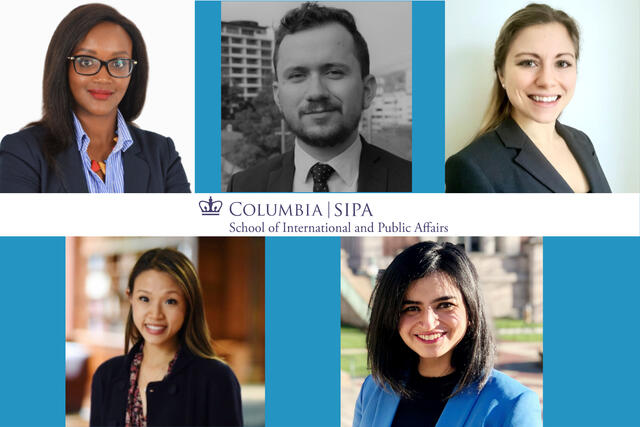
The word Alfajiri, Swahili for dawn, embodies the vision that the team has of exploring new ways to look at the investments in energy access for forcibly displaced communities. The project aims to examine energy access programs and initiatives in refugee settlements and their host communities and propose potential optimal interventions for the Smart Communities Coalition (SCC). SCC, co-chaired by Power Africa coordinated by USAID and Mastercard is a coalition of public and private partners that seek to improve the delivery of essential services to forcibly displaced individuals and host community members through energy, connectivity, and digital tools. The team will analyze various energy access projects in refugee settlements across Africa, identify gaps, opportunities, and best practices emanating from historical interventions, and develop a robust strategic framework for assessing different market-oriented approaches deployed. The final output will be a White Paper for SCC that can be used to inform the design and implementation of future funding initiatives to promote sustainable private-sector driven solutions.
Team: Andres Moncada, Luna Ruiz, Marcelle Meyer, Rishika Surya, and Wangeci Wanyahoro
Amazon Fires
Image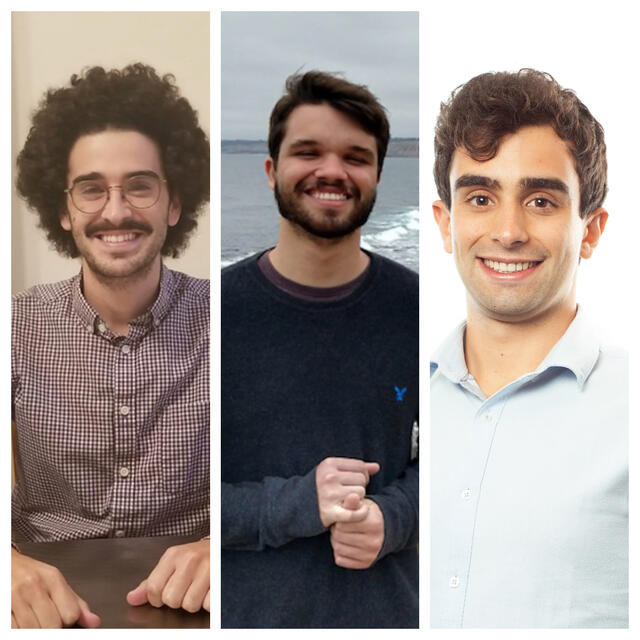
It is known that exposure to the pollutants found in smoke plumes of burning biomass is associated with respiratory and cardiovascular diseases. The Amazon Fires project aims to quantify the effect of pollutants generated by fires in the Amazon Rainforest on health in regions of Brazil more remote than those as of yet investigated. Once pollutants from fires in the Amazon are released into the atmosphere, they may be carried by wind to densely populated areas in the south and southeast of Brazil where as many as 130 million people could be affected. A quantification of this effect can be accomplished with data on the location of fires, a transport model to determine the trajectory of smoke produced by these fires, concentration values of pollutants, and regional data on hospitalizations. Use of the transport model would allow for the identification of pollution released from the fires as the cause of any observed negative health effects.
Team: Akiva Rube, Guilherme Jardim, and Julio Barros
ETaxi NYC
Image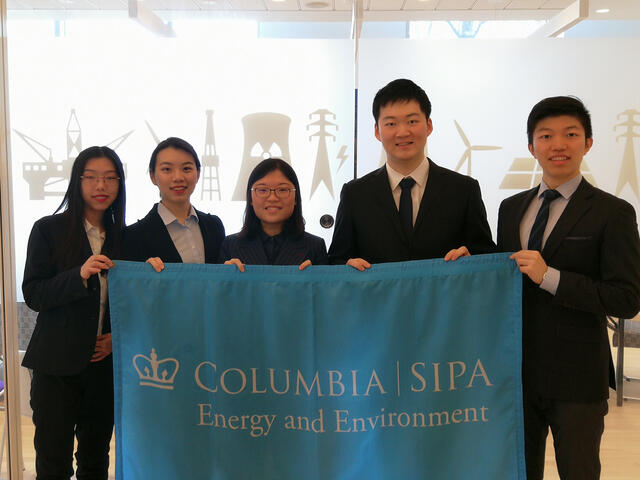
ETaxi NYC aims at facilitating the process of electrifying taxicabs in New York City. The team hopes to support the city to replace all its vehicles in the taxi fleet with Electric Vehicles by 2050, supported by sophisticated infrastructure, market systems and financial resources. The team will identify opportunities and challenges from technology development, infrastructure construction, policy regulations and stakeholder’s willingness. The output of this project will include a field research in New York City and a case study in Shenzhen, China analyzing successes and failures during their processes of taxi electrification, focusing especially on the policy aspect. Finally, E-Taxi NYC will design a feasible strategic plan for implementing taxi electrification in New York City, based on status quo in NYC and experience from other cities or countries.
Team: Zehua Guan, Zora Qixin Xiang, Beiwen Shen, Xuechun Bao, Bojun Chen
California V2G
Image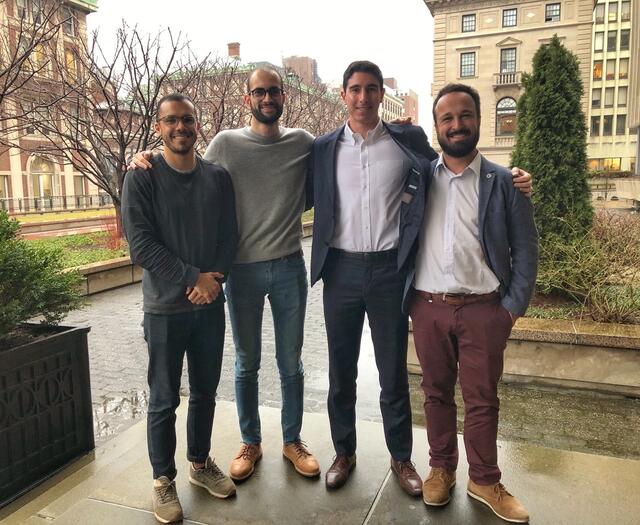
Integrating high amounts of renewable energy into the electric grid necessitates significant energy storage resources. Together with California’s Vehicle-Grid Integration Initiative, the Vehicle to Grid (V2G) Project provides policy pathways for using California’s electric vehicles as grid-scale energy storage.
Team: Francisco Galtieri, Alejandro Neira, Dan Propp, Claudio Protano
EmPower Bidibidi
Image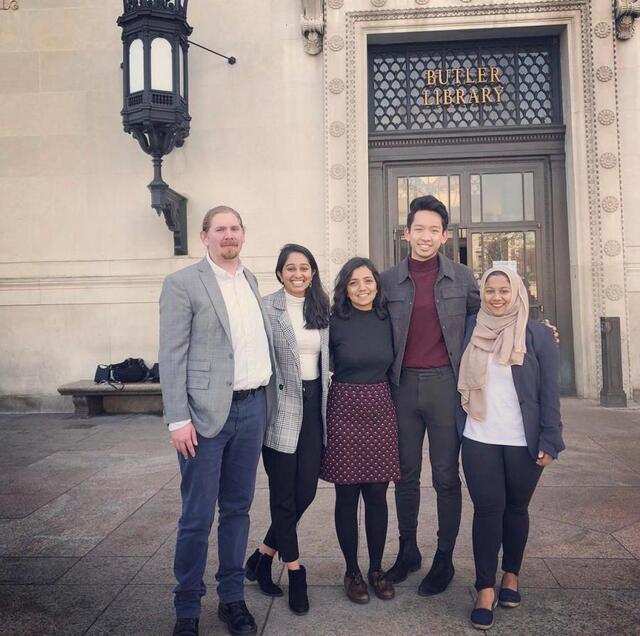
EmPower Bidibidi aims to assess whether the Pay-As-You-Go (PAYGO) solar model can be used to provide a sustainable and gender equitable source of clean energy in humanitarian settings. The team plans to do this by evaluating Mercy Corp’s Access to Modern Energy in Humanitarian Settings (AMPERE)’s pilot in Bidibidi Refugee Camp in Northern Uganda. The team will be traveling to Yumbe, Uganda to collect data, conduct survey research, and meet with local stakeholders. The final goal is to provide scalable best practices that can then be leveraged as solutions for refugee camps in other regions of the world.
Team: Aditi Bansal, Angelo Benny Bertagnini IV, Chandni Sinha Das, Faiza Haq, Tenzin Dawa Thargay
Atlanta Rising
Image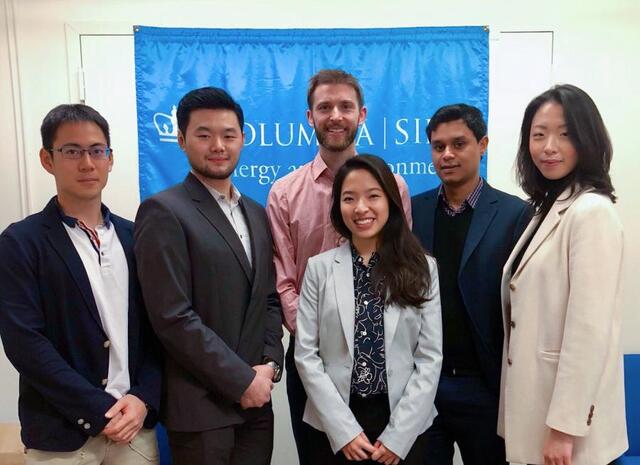
Recognising the risk that climate change poses to its community at large, the City of Atlanta is setting out to reduce its contribution to the problem of climate change and to mitigate its current and future effects. Flood risk, infrastructure collapse, clean water scarcity and droughts, and worsening air quality, are just a few of the vulnerabilities that the city faces. Together with the Mayor’s Office of Resilience for the City of Atlanta, Atlanta Rising aims to assess and identify ambitious yet practical resilience improvements that are most relevant to the city’s unique geography.
Team: Yu Ann Tan, Ethan Tsai, Robert Paton, Haeun Kim, Rishi Chakraborty, Nobuhiro Arai
EVery City
Image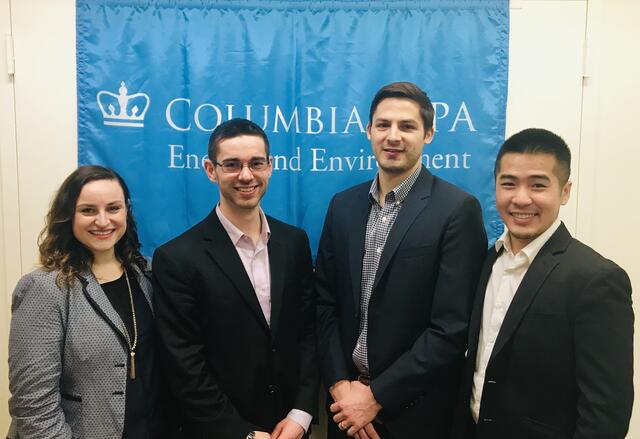
EVery City aims to chart a path for the future of urban transit buses in New York City in order to help the Metropolitan Transportation Authority (MTA) achieve its stated goal to electrify the more than 5,700 buses operating in NYC by 2040. The team will engage stakeholders across city and state government agencies, electric utilities, and the private sector to support NYC as it seeks to transform and decarbonize its transit bus system. The output of this project will include policy, financial, operational, and technology recommendations for transit bus and charging infrastructure deployment that will benefit NYC, and assist other cities electrify their transit bus fleets.
Team: Lauren Kastner, Michael Woods, Andrew Catania, and Eugene Tseng
Sustainable Cooling
Image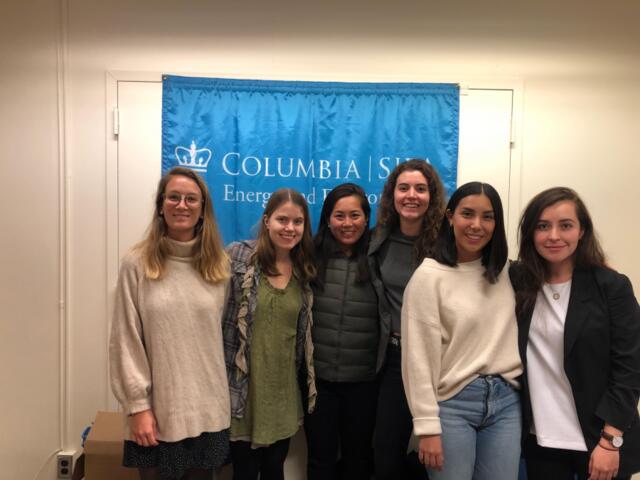
The Sustainable Cooling project aims to: 1) Understand the current coping strategies for heat adaptation in local communities in Dhaka, Bangladesh and 2) Assess whether cool roofs are an appropriate sustainable cooling strategy that would aid in mitigating rising temperatures due to climate change and rapid urbanization.
Team: Catalina Demidchuk, Molly R. Blessing, Jaclyn W. L. Eng, Grace Cushman, Luz Gil, and Daniela G. Santoyo
Post-María Puerto Rico
Image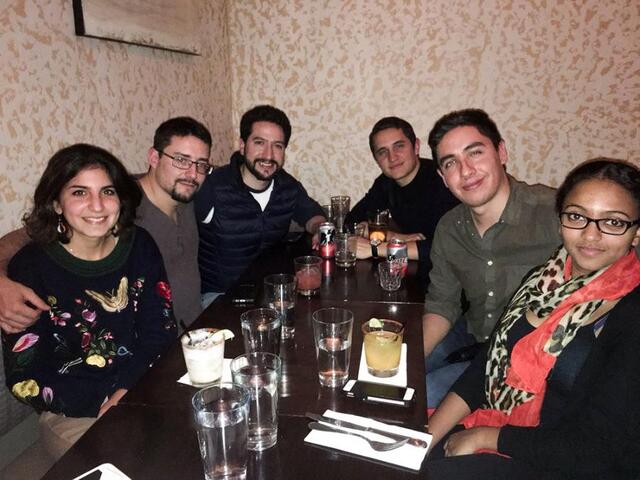
The team will create a platform for cooperation among key federal and local stakeholders and international public and private electricity pioneers to facilitate the scaled-up implementation of solar microgrids as an alternative electricity supply option in Vieques, Puerto Rico. The vision of the project is to advance a long-term electricity supply effort driven by “locals for locals,” an approach that can be replicated in other parts of Puerto Rico and other islands.
Team: Lara Younes, Rodrigo Inurreta Acero, Rodrigo Paz y Rocha, Alejandro Valdez, David Antonio Maravilla Flores, Eskedar Bahru Gessesse, and Rashide Assad Atala
Sol Team Six: PV Preparedness
Image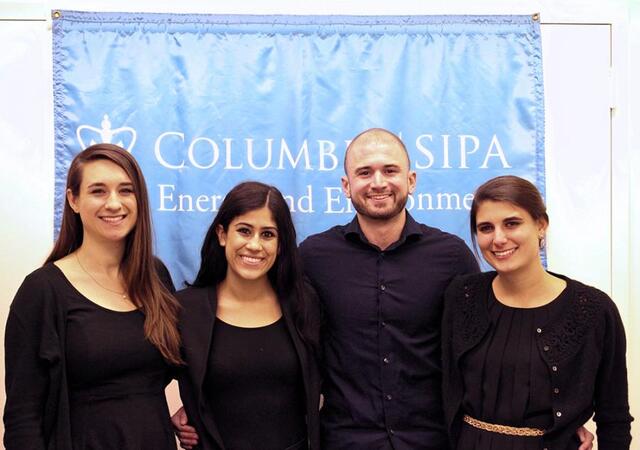
In response to increasingly severe hurricanes in the Caribbean, Sol Team Six’s goal is to assess a means of utilizing pico solar products to prepare disaster-vulnerable communities in the Dominican Republic for energy challenges posed by future hurricanes and subsequent grid destruction, focusing on immediate post-disaster needs of lighting and communication. Their pilot project will connect local, regional, and national actors through a series of university-based workshops to engage local communities in solar technologies, and stakeholder convenings to develop a resilient and proactive strategy for further incorporating and purchasing these products locally in the future.
Team: Alicia Gorecki, Simone Kramer, Scott Belding, and Kirsten Holland
Reimagining Grid Solutions
Image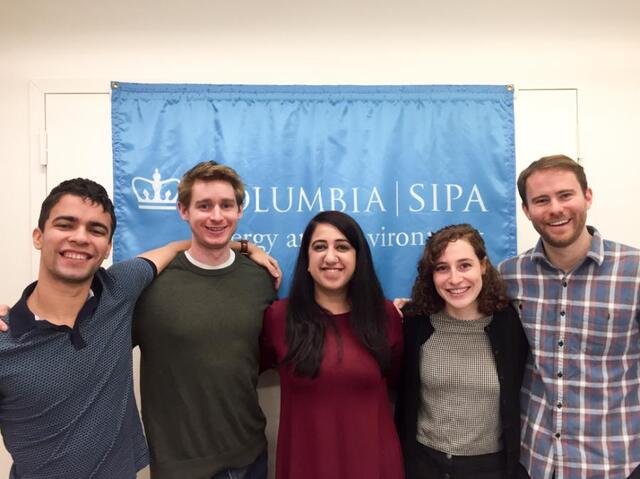
The National Institute of Energy and Island Sustainability (INESI) has invited our team to author a chapter of the 2017 State of Energy Report, co-published with The State Office of Public Energy Policy (OEPPE) of Puerto Rico. The chapter explores the regulatory, policy and financial barriers and drivers of microgrid development in Puerto Rico. We also examine existing microgrids on the U.S. mainland in order to provide case studies of successful microgrid applications or innovative microgrid models.
Team: Giovanni Emmanuel Pagan, Mac Farrell, Astha Ummat, Lindsay Cherry, and Jeff Lepley
Solar Tan(Sun)ia
Image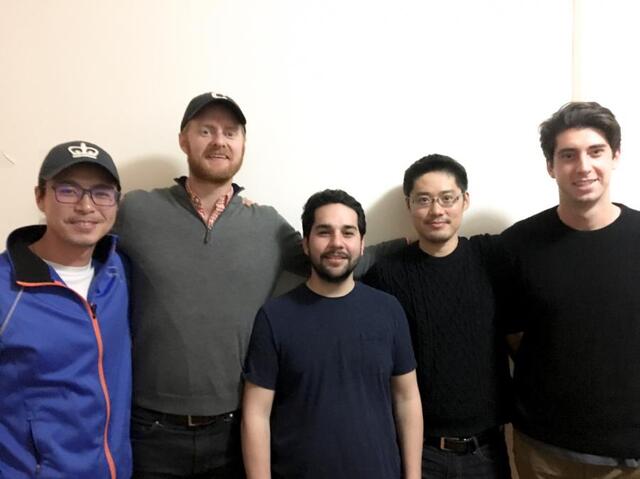
Solar Tan(Sun)ia's goal is to develop a survey study with stakeholders from Tanzania (schools' administrators, Rural Energy Agency, Ministry of Education as well as Multilaterals and NGOs) to lay the ground for a potential Randomized Control Trial study. They intend to identify the main challenges to finance solar products (exploring public budget allocations dynamics) and perceived direct benefits and externalities from having solar panels in rural schools. With the final insights from the project they expect to present initial policy recommendations and outline of implementation plan to scale the electrification for rural schools.
Team: Will Han Xia, Even Kvelland, Alberto Morales, Hiroyuki Yamagata, and Benjamin Gionet
Rapid Solar Solutions for Rural Electrification in Western China
Image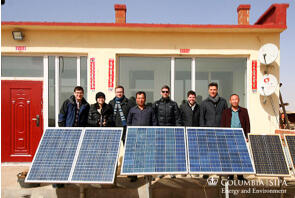
In January of 2015, a team of students traveled to China to study best practices for off-grid solar electrification in rural China and host a stakeholder conference to collect and test findings. The team used the insights to inform the design of a rapid prototype model that will expand access to these solutions.
UNFCCC’s 21st Conference of Parties: SIPA Delegation, Paris, France
Image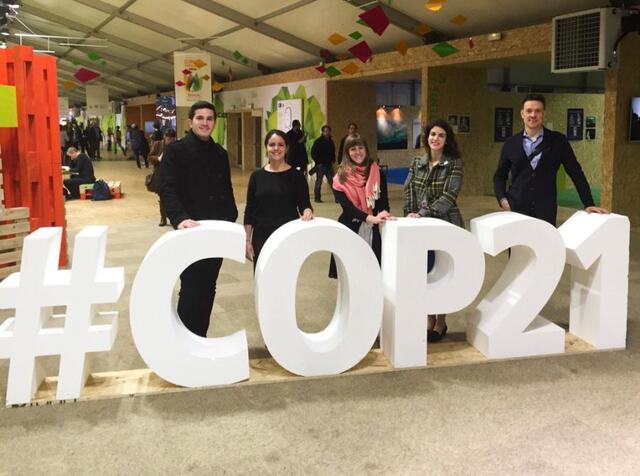
In close collaboration with Chinese counterparts at the various governmental levels, this team of students conducted a feasibility study for a centralized database of existing renewable energy policies and incentives. The purpose of the database would be to inform and promote the deployment of energy solutions by firms and governments across China.
Energy Empowered Village
Image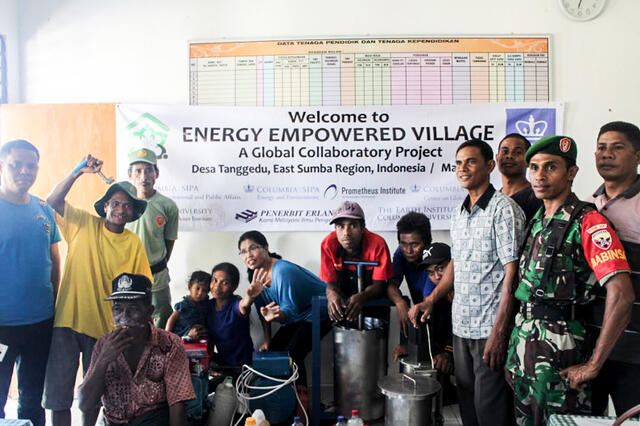
Primarily working on access to fuel, the EE Village project sought to address the energy-related needs of Tanggedu Village on the rural Sumba Island. Their pilot implementation model included the physical delivery and implementation of biofuel equipment, as well as educational materials with technical instructions for sustaining a biofuel-generated village.
Sustainable Power from Agriculture in Ukraine
Image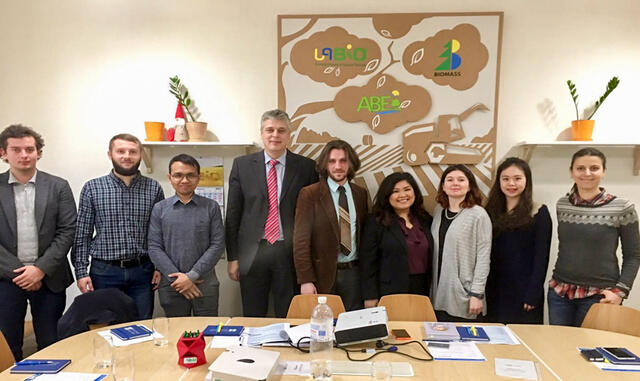
This team’s project aimed to promote sustainable power from agriculture by assessing the feasibility of a second-generation biofuels plant in the Odessa region.
Renewable Energy Policy Database for China
In close collaboration with Chinese counterparts at the various governmental levels, this team of students conducted a feasibility study for a centralized database of existing renewable energy policies and incentives. The purpose of the database would be to inform and promote the deployment of energy solutions by firms and governments across China.
Charging the Northeast
This student group provided an analysis of the state of electric vehicle charging infrastructure in New York, Massachusetts and Connecticut as of Spring 2017, financial analysis on the economics of charging network development, and estimates of potential greenhouse gas emission reductions accomplished through EV adoption.
Bridging the Global Data Gap: Gender and Environment
Using International Union for Conservation of Nature’s (IUCN) Environment and Gender Index as a framework to identify gender-disaggregated data gaps, this team traveled to Indonesia to study data availability in the forestry sector. The resulting documentary examines the interrelated nature of gender and the environment, and how dependable data informs policy.
Project Joule
In partnership with the Layan Refugee Camp network, Huffington Post, and Chatham House, this project team studied the intersection of home economics, energy needs, and energy access in the context of three Syrian Refugee Camps. The team traveled to Lebanon to document living conditions and conduct interviews with families living in camps. The resulting material was presented in an exposition of photos and stories meant to garner private sector support and solutions.
R-MAP
Using Geographic Information System (GIS) technology, this has teamed up with Great Lakes and other graduate-level universities to build an open-source map that plots institutional-level energy access in Rwanda. The map will be used to help energy providers target areas for new development more effectively.
India Greenbook
In order to promote new investment in the solar sector in Rajasthan, India, this team partnered with the Rajasthan Solar Association to study feasibility of solar securitization for investors.
Capital Markets: Can Clean Energy Learn from Oil and Gas?
This New York-based research project explored the history of capital markets for oil and gas and consider lessons that could be applied to increasing investments in low-carbon technologies. It was implemented in partnership with the Center on Global Energy Policy and Aligned Intermediary.